Commentary 18 Aug 2008 07:44 am
Burstin’ Out
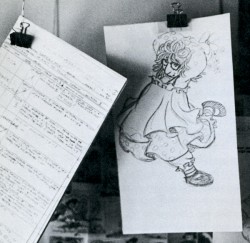 - This past week, Paul Spector offered some drawings of and by his father, Irv Spector, that were done while in the Signal Corps during WWII. The cartoons and caricatures were all drawn by artists from the varied studios working for the Army as cartoonists. Usually, these pictures don’t make a lot of sense to those outside of the studio and the immediate situations being caricatured. However, in posting this group of drawings en masse, I was taken by the high calibre of the art styling of the images.
- This past week, Paul Spector offered some drawings of and by his father, Irv Spector, that were done while in the Signal Corps during WWII. The cartoons and caricatures were all drawn by artists from the varied studios working for the Army as cartoonists. Usually, these pictures don’t make a lot of sense to those outside of the studio and the immediate situations being caricatured. However, in posting this group of drawings en masse, I was taken by the high calibre of the art styling of the images.
In the numerous studios I’ve worked cartoons were usually drawn. The larger the studio, the
____Tissa David’s self caricature in________greater the number of cartoons. I have at least
________the Canemaker book.___________100 of these cartoons saved from the Raggedy Ann experience where I became the lead character in an almost-daily strip drawn by assistant animator, Jim Logan. Lots of the other artists chimed in with many, many cartoons. (You can see a couple of these – certainly not the best which were very vicious – in John 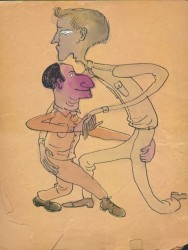 Canemaker‘s book, The Making of Raggedy Ann. Unfortunately, my folder of these cartoons is in storage or I’d post some of them.)
Canemaker‘s book, The Making of Raggedy Ann. Unfortunately, my folder of these cartoons is in storage or I’d post some of them.)
The thing about all these pictures is that they’re not, of course, art. They’re meant as quick funny gags trying to get a laugh. Some of those many Raggedy Ann drawings have style – Jim Logan’s quick sketches were the most vibrant and memorable – but most of them are just funny and without any visual gravity.
I think of this because I noted that in all of the cartoons I’ve seen from the Spector collection, there’s a real sense of art – modern art. These guys in the Signal Corps were obviously aware of Steinberg, Picasso, Matisse and the moderns.
This is a few years before UPA existed, although it’s likely that discussions of modern art moving into animation had been discussed by these guys. However, you can see in their cartoons that the 20th Century Art had become part of the fabric of 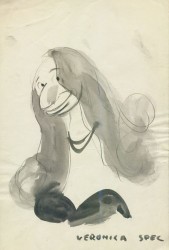 their very drawing styles. It was certainly bubbling to the top and waiting to burst out of them. UPA and the change was inevitable and couldn’t have been stopped, once someone would finance them.
their very drawing styles. It was certainly bubbling to the top and waiting to burst out of them. UPA and the change was inevitable and couldn’t have been stopped, once someone would finance them.
In discussing this with Paul Spector, he responded con-tinuing the subject. I thought this sentence of his particularly pertinent to the subject:
___I can only say that you could have found my dad at
___MOMA just as often as at the Met, and since he didn’t
___live in a vacuum no doubt he was not the only cartoonist
___doing this.
Thge point was that a large group of the cartoonists were keeping up with the arts. They were going to modern museums looking at 20th Century Art. Cartoonists such as Jack Kinney, Fred Moore and Norm Ferguson drew what came natureally. Others like VIP, John Hubley, and Sam Cobean studied new art and absorbed it into their system. This is what they drew naturally.
Of course, once UPA was successful others quickly jumped in and expressed themselves in an art style they truly appreciated. Tex Avery‘s style changed drastically from the cartoon naturalism to flat, angled art. He took the new style from MGM to Walter Lantz. Ward Kimball took the opportunity of a low profile music short to introduce his version of UPA with Toot Whistle Plunk & Boom and won the Oscar for it. Even Paramount tried their hand by thickening the outer linework and keeping a thinner inner line. They also flattened everything. It was art, but it was bold for them. Terrytoons, prior to the big change under Gene Deitch, had only the natural kraziness of Jim Tyer, who could only have existed as wildly as he became under a UPA era.
They were drawing this material in their cartoon sketches; it had to come out in their animation.
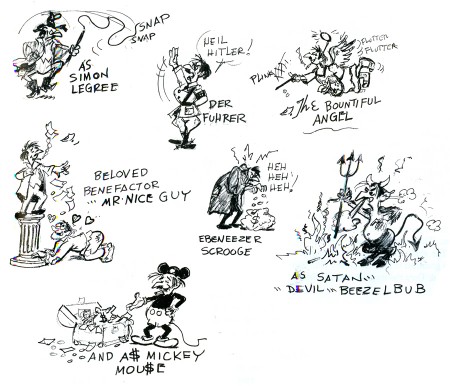
Jack Kinney’s caricature of the “7 faces” of Walt.
from Kinney’s Walt Disney and Assorted Other Characters.
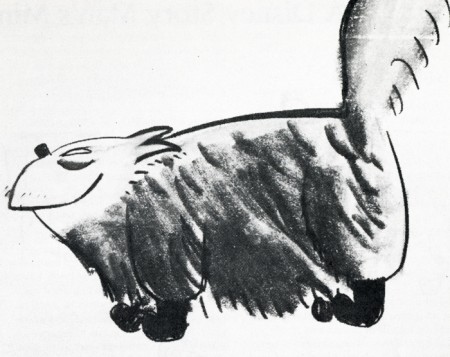
Dick Huemer as drawn by Joe Grant
from Mike Barrier’s Funnyworld #17
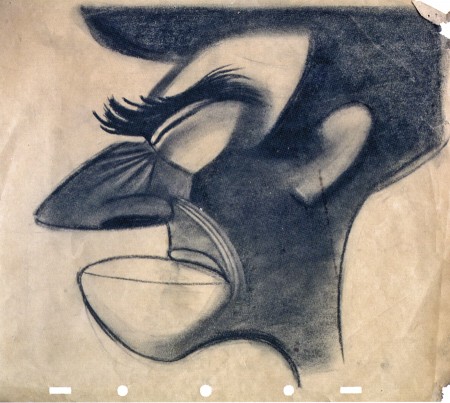
John Hubley’s caricature of Bob McIntosh
from Amid Amidi’s Cartoon Modern
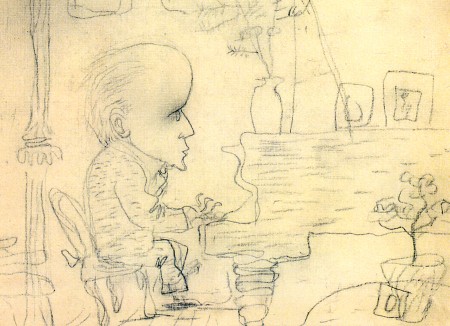
Fellini’s caricature of composer, Nino Rota.
Not all artists are animators.

on 18 Aug 2008 at 1:24 pm 1.Richard O'Connor said …
The Bob McIntosh drawing has a strong whiff of Covarrubias to it.
on 18 Aug 2008 at 1:29 pm 2.Michael said …
The Fellini book I have features about a dozen pages of caricatures that are all direct steals of Covarrubias’ style. But that’s my point. The great cartoonists are involved in the arts and painting; they would definitely try their hand at the newer styles.
on 18 Aug 2008 at 5:08 pm 3.Amid said …
hi mike – no need to approve this comment, but just wanted to clarify that it’s a JOHN HUBLEY drawing of Bob McIntosh. The ident is switched around right now.
on 22 Aug 2008 at 1:16 am 4.Eddie Fitzgerald said …
Fascinating!
on 23 Aug 2008 at 5:27 pm 5.Paul said …
There are caricatures of other Disney artists by Bill Peet at:
http://www.billpeet.net/PAGES/disneypeople.htm